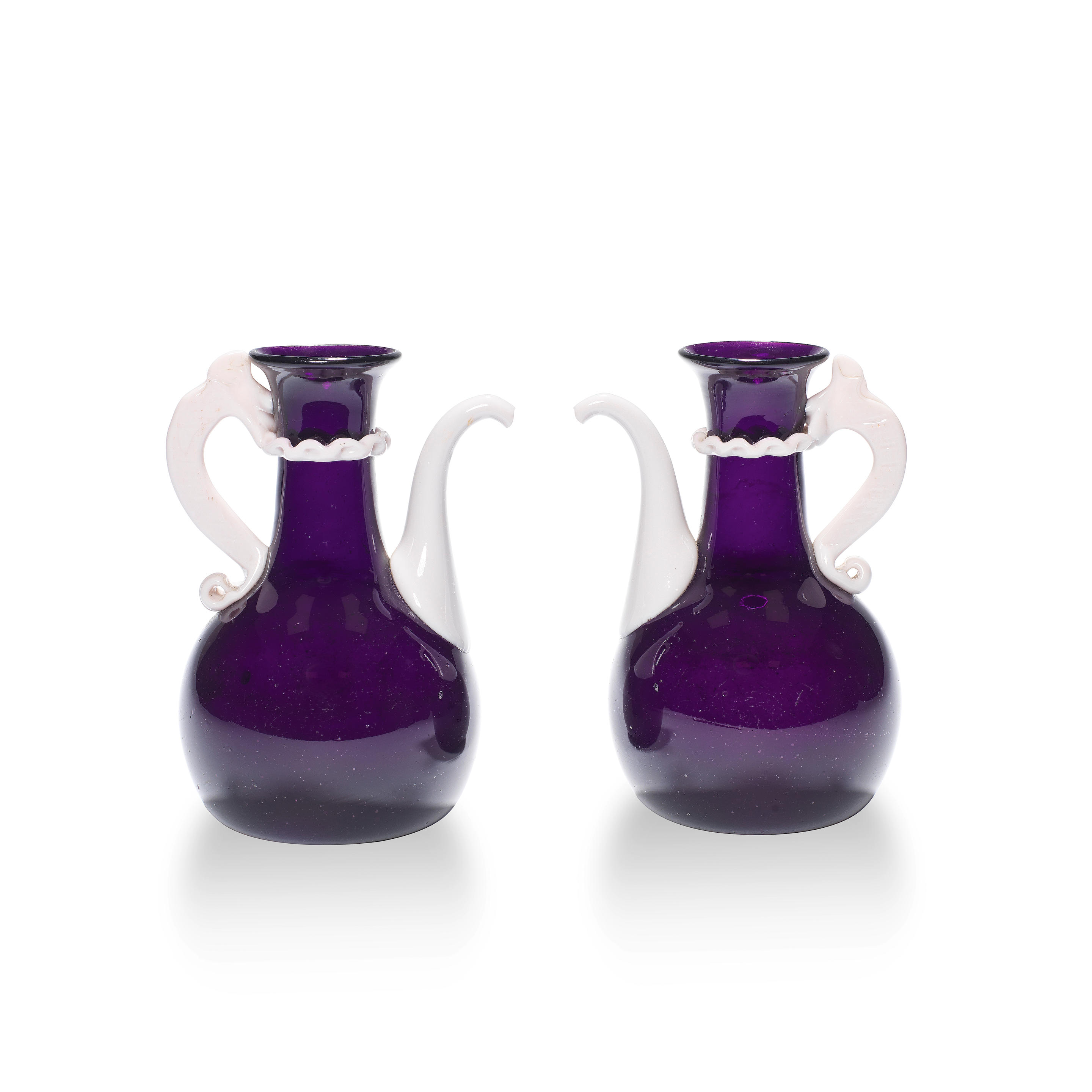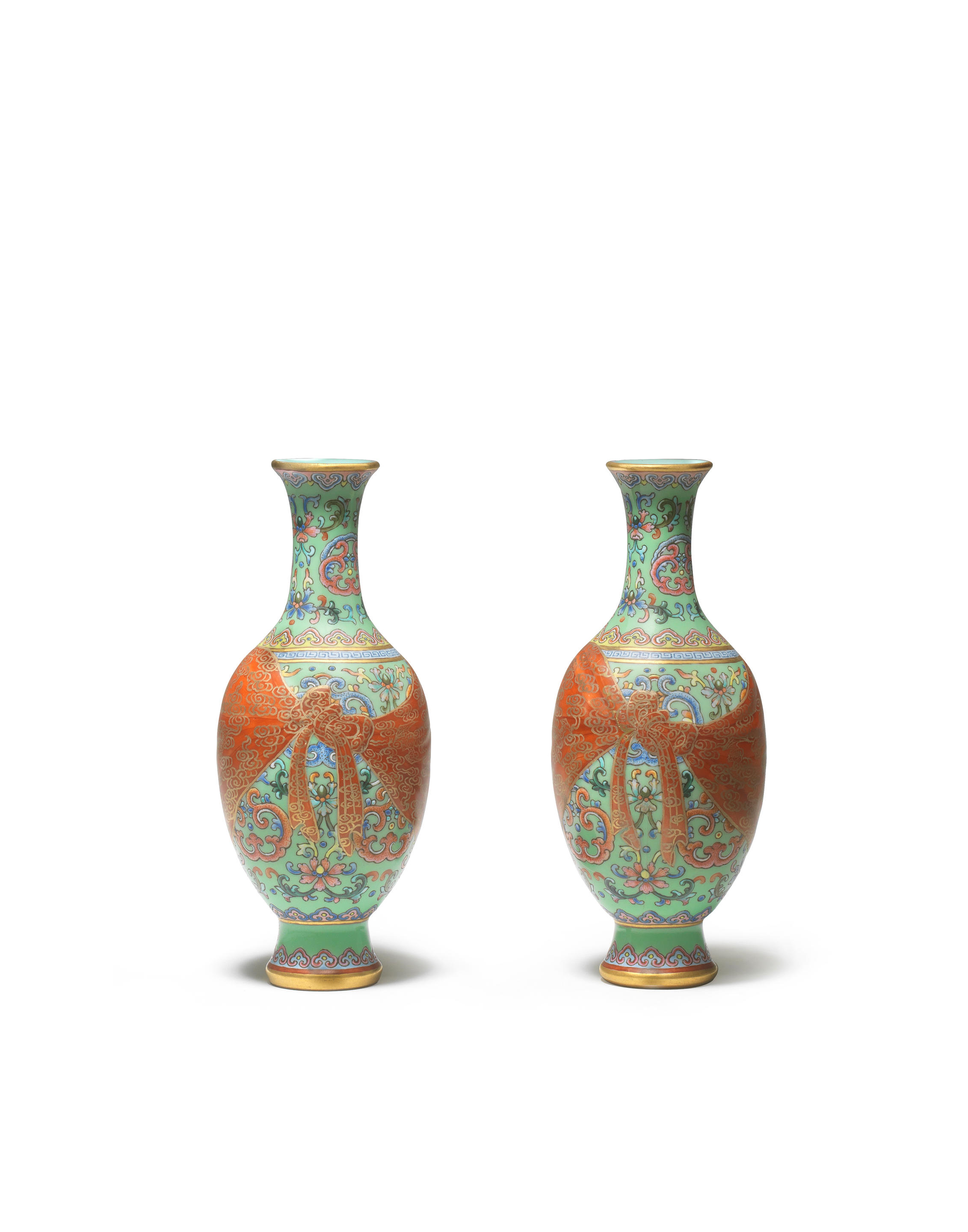A rare pair of Blashfield stoneware rounded rectangular planters, circa 1860, stamped Blashfield, Patent Pottery. John Marriott Blashfield remarked in his essay Account of the History and Manufacture of Ancient and Modern Terracotta (1855) that he had been inspired to make a kind of artificial stoneware by seeing the kind of pieces for which Mark Blanchard had been awarded prizes at the Great Exhibition of 1851. He obtained Letters Patent in 1854 for “Improvements in the Manufacture of China, Pottery, Bricks” and other articles, made for the most part from clay and again in 1860 for “improvements in burning pottery and china ware”. He had a manufactory in Millwall, Poplar with a sales outlet at No. 1 Praed Street, Edgware Road, London, but moved to Stamford, Lincolnshire in 1859, to be nearer the clay-beds. He won medals for Terra Cotta, in the glass and pottery and architectural objects classes at the International Exhibition in 1862 and a silver medal at the Paris International Exhibition of 1867. One of the most important commissions with which he was involved was supplying architectural terracotta for the decoration of the new Museum of Fine Arts in Boston, but this undertaking stretched his resources too far and by 1874 the Stamford Terracotta Company works, machinery as well as models and moulds were for sale; it finally closed in 1875. This “ flowertray” is illustrated no. 335 from a selection of vases, statue, busts from Terra-Cotta’s by J M Blashfields, London published by John Weil, 58 High Holborn 1857. (See engraving)
A rare pair of Blashfield stoneware rounded rectangular planters, circa 1860, stamped Blashfield, Patent Pottery. John Marriott Blashfield remarked in his essay Account of the History and Manufacture of Ancient and Modern Terracotta (1855) that he had been inspired to make a kind of artificial stoneware by seeing the kind of pieces for which Mark Blanchard had been awarded prizes at the Great Exhibition of 1851. He obtained Letters Patent in 1854 for “Improvements in the Manufacture of China, Pottery, Bricks” and other articles, made for the most part from clay and again in 1860 for “improvements in burning pottery and china ware”. He had a manufactory in Millwall, Poplar with a sales outlet at No. 1 Praed Street, Edgware Road, London, but moved to Stamford, Lincolnshire in 1859, to be nearer the clay-beds. He won medals for Terra Cotta, in the glass and pottery and architectural objects classes at the International Exhibition in 1862 and a silver medal at the Paris International Exhibition of 1867. One of the most important commissions with which he was involved was supplying architectural terracotta for the decoration of the new Museum of Fine Arts in Boston, but this undertaking stretched his resources too far and by 1874 the Stamford Terracotta Company works, machinery as well as models and moulds were for sale; it finally closed in 1875. This “ flowertray” is illustrated no. 335 from a selection of vases, statue, busts from Terra-Cotta’s by J M Blashfields, London published by John Weil, 58 High Holborn 1857. (See engraving)







.jpg)

/930/1214930.jpg)





Testen Sie LotSearch und seine Premium-Features 7 Tage - ohne Kosten!
Lassen Sie sich automatisch über neue Objekte in kommenden Auktionen benachrichtigen.
Suchauftrag anlegen